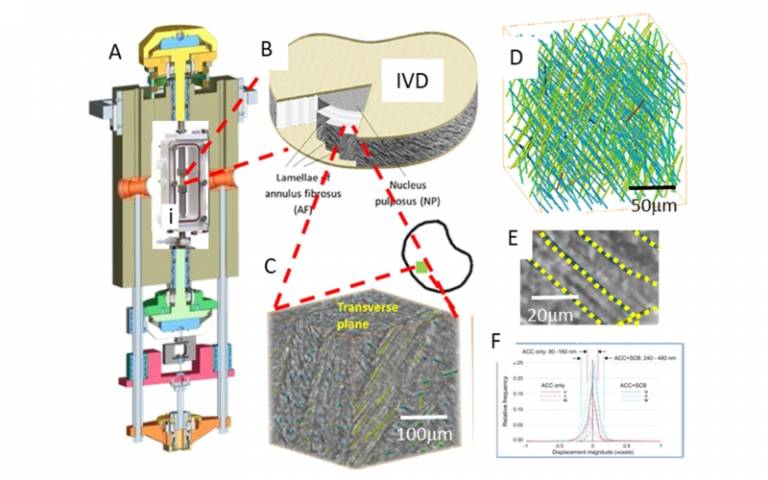Funded by EPSRC, this project aims to develop Tomo-SAXS that can concurrently image molecular-to-micronscale strains in soft tissues, combining phase-contrast CT and 3D small-angle X-ray scattering.
Funder: Engineering and Physical Sciences Research Council
Period: April 2021 - October 2025
Description: Understanding, quantitatively and in situ, how small-scale supramolecular changes in the extracellular matrix (ECM) affect tissue-/organ-level function is critical to tackling major current bioengineering challenges. This requires a multiscale moleculeto-organ-level understanding of the spatially resolved changes in the 3D in vivo physiological tissue environment in response to biomechanical forces, age-linked degeneration, disease, and pharmaceutical treatments. Here, X-ray tomography (CT) with digital volume correlation (DVC) and small-angle X-ray scattering (SAXS) are world-leading in revealing ECM dynamics in situ at the micro (CT) and nano (SAXS) level respectively. However, these two complementary methods are currently not integrated. This project is to combine phase-contrast CT-DVC and in situ SAXS into a single platform for multimodal/multiscale 3D imaging of biological soft tissue and biomaterial mechanics – TomoSAXS, creating a world-leading technological capability in the UK for multiscale full-field deformation of hierarchical biological and bio- materials. Our group is leading the research on Optimising nano-scale measures of strain in soft collagenous tissue using phase contrast CT and DVC.
People: Dr Catherine Disney, Ms Alissa Parmenter

Figure: (A) P2R in situ micromechanics test rig with (inset i) new bio-cell designed for TomoSAXS. (B) Schematic of IVD and (C) collagen bundles resolved using PC-CT. (D) Individual bundles labelled, and (E) bespoke DVC point cloud (yellow) aligned to bundles, with an expected displacement resolution of order of 10 nm, an order of magnitude better than our prior work (F).
 Close
Close

